I was on a mountain bike ride called the Tour de Felasco near Gainesville, Florida with around 500 of my closest friends when I came across this oddly-shaped tree. This section of trail was hilly and rooty and about 30 miles into a 50-mile ride, so lots of people were stopping to walk in order to preserve their legs. I grabbed a quick picture and then kept going, thinking I’d look it up later and figure out:
Is this an Indian pointing tree?
First off, I realize the term “Indian” pointing tree is problematic – a more appropriate term might be Indigenous Tree or Culturally Modified Tree; however, many of the sites on the internet that collect sightings of these trees still call them Indian Marker Trees or Signal Trees or Indian Ghost Trees.
Marker Trees are believed to have been created for several reasons by Native Americans mostly before the early 1800s. Some of them may have marked a place of significance – a council meeting spot or stream crossing or a source of water. Sections of the Appalachian Trail in north Georgia were built atop an old Cherokee trail, and there are several reported Marker Trees along the route that indicate running springs for water. Marker Trees are also thought to mark burial spots where the number of branches atop the horizontal section may indicate the number of people buried beneath.
Here's another possible Marker Tree I came across on a bike ride outside Augusta, Georgia:
I’ve heard some folks say these trees always point north, but that doesn’t make a lot of sense to me – any halfway decent woods-person knows which way north is from the travel of the sun and doesn’t need a tree to tell them that. But, to me, it could make sense to indicate an important area or a burial site.
The Mountain Stewards have begun the Indian Trail Tree Project, a database of these trees and their locations across the country. So far, they have located 2,450 examples in 44 states of what they believe to be Marker Trees. Most of them are east of the Mississippi.
How are Marker Trees created?
Most Marker Trees are made of white oak, which typically have a lifespan of 300 years. They are usually formed when the sapling is small, around 5 or so years old, by bending the tree with a combination of supports and thongs that form the typical angles:

Oftentimes the bend at the far end of the horizontal section (the part that continues to grow upward) will form a Nose, or noticeable bump. One theory is that the Native American tree artist added a charred bit of wood under the bark here, to encourage growth of the bark around it.
The Mountain Stewards have categorized Marker Trees into several categories by shape. These are just a few of their many variations:

The “4” tree was created not by bending the tree’s main trunk, but by bending a branch to create the marker. These were thought to be used to mark water sources off a main trail.
So, have I really found a Marker Tree?
At first, I was pretty skeptical. Couldn’t these trees form naturally when one tree falls on another or when a branch breaks off to form an upright? For instance, right outside my kitchen window I have a tree branch that is slowly rotting from the outside in. I anticipate that within a few years the outer branch will fall off and I’ll be left with a branch that ends in an upright – what might look like a pointing tree.
Once I started looking, I found these “Marker Trees in the making” everywhere:
However, as I’ve thought more about this, I realize that it’s unusual to find a large tree that looks like it naturally fell low to the ground to form a horizontal L shape – typically, fallen trees either don’t form a perfect horizontal or are not at the height of a person.
I’ll confess to some skepticism when it comes to Marker Trees. Some of the websites seem almost to be committing a sort of confirmation bias, seeing Marker Trees in some doubtful instances. Other videos show folks “reading” the intent of the tree using dowsing rods. I’ll admit that I’ve successfully used dowsing rods to find water underground, but I’m not entirely convinced they can be used to tell the gender of people buried under a tree and whether or not they died of typhoid. But I could be wrong.
So, the bottom line is that there’s no real way to know if a tree is a true Marker Tree. But there are a few characteristics to look for:
The horizontal section of the tree must be low to the ground.
Since trees grow taller by adding to their tips and branches each year (not by inching upward out of the ground), the horizontal section of the Marker Tree will always stay approximately the same height as the tree artist intended.
The base of the tree must be big.
The Mountain Stewards won’t consider a tree unless it’s at least 20 inches in diameter. This is because the tree needs to be around 200 years old or more. There isn’t a lot of evidence that Marker Trees were used much past the early 1800s, and sadly, the Cherokee removal from the South in 1838 meant only a few Native Americans were left hiding in the mountains who could have continued to make these trees. This site has a table for estimating the age of trees based on the diameter of the trunk. For instance, an oak with a 24 inch diameter would have started as a seed around the 1830s.
Is it a white oak?
Most confirmed Marker Trees are oaks, usually white oaks, because they live long and were easy to shape. I have found that sourwood trees tend to bend themselves into many interesting shapes and often end up looking as if they’re “pointing”. But sourwoods are smaller and not as long-lived as oaks. I think of them as the free-spirits of the forest, and I’m going to try to figure out in a future newsletter why their branches are so unpredictable.
This is a nice video with interviews of Native American elders discussing Marker Trees as well as biologists doing core samples of the trees to determine their age.
Just yesterday, on a hike with a local hiking club to find Hidden Falls, we came across what might be a Marker Tree high on a ridgetop. As we continued on past it to the falls, I realized that it was pointing directly at the waterfall, which was less than a mile away as the crow flies.
So what do you think? Could these truly be culturally modified trees marking significant spots? Or have they just formed naturally? Have you ever seen one of these trees? Leave a comment below - I’d love to know your thoughts.
Weird Nature of the Week
(Click the link - it’s pretty awesome!)


Detritus
Marker tree from 1930: This tree was created by two Ojibwa men at the direction of the park director when an old native American trail was retraced.
If you’d like to see a Marker Tree being made, you can see modern-day demonstrations like this one near the Green Bay Trail.
We all know that getting outdoors is good for your health. Well, now doctors can write a Nature Prescription for patients to spend at least two hours per week in the wilderness.
Sweden is teaching crows to pick up cigarette butts as a way to control their litter problem. Seems a bit unfair to the crows. Does this mean crows are easier to train than the humans who drop the trash in the first place?

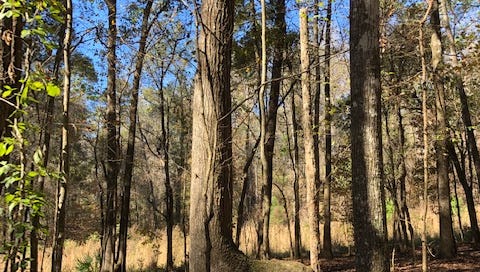



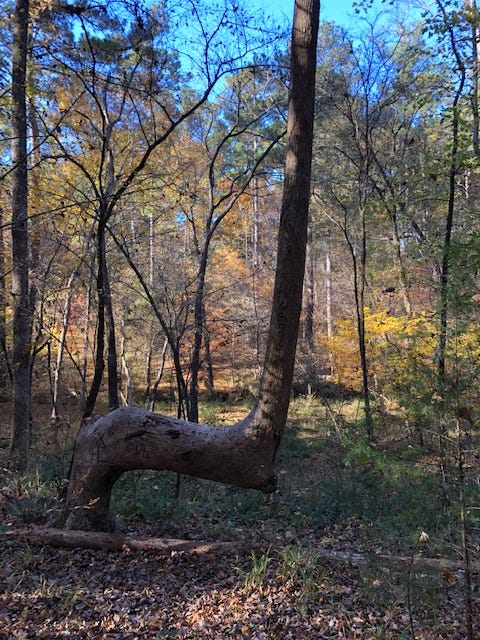
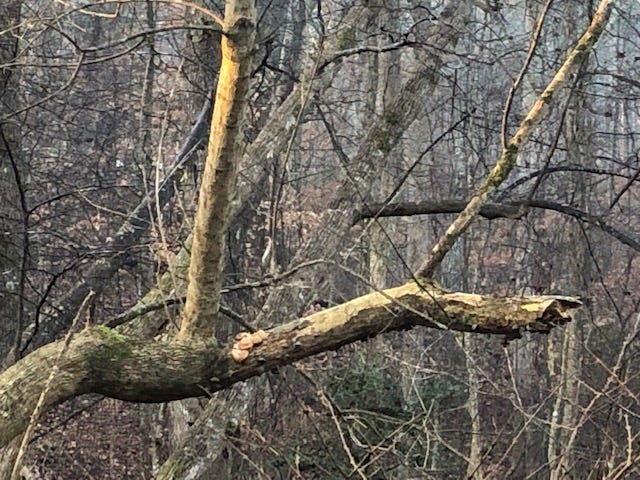


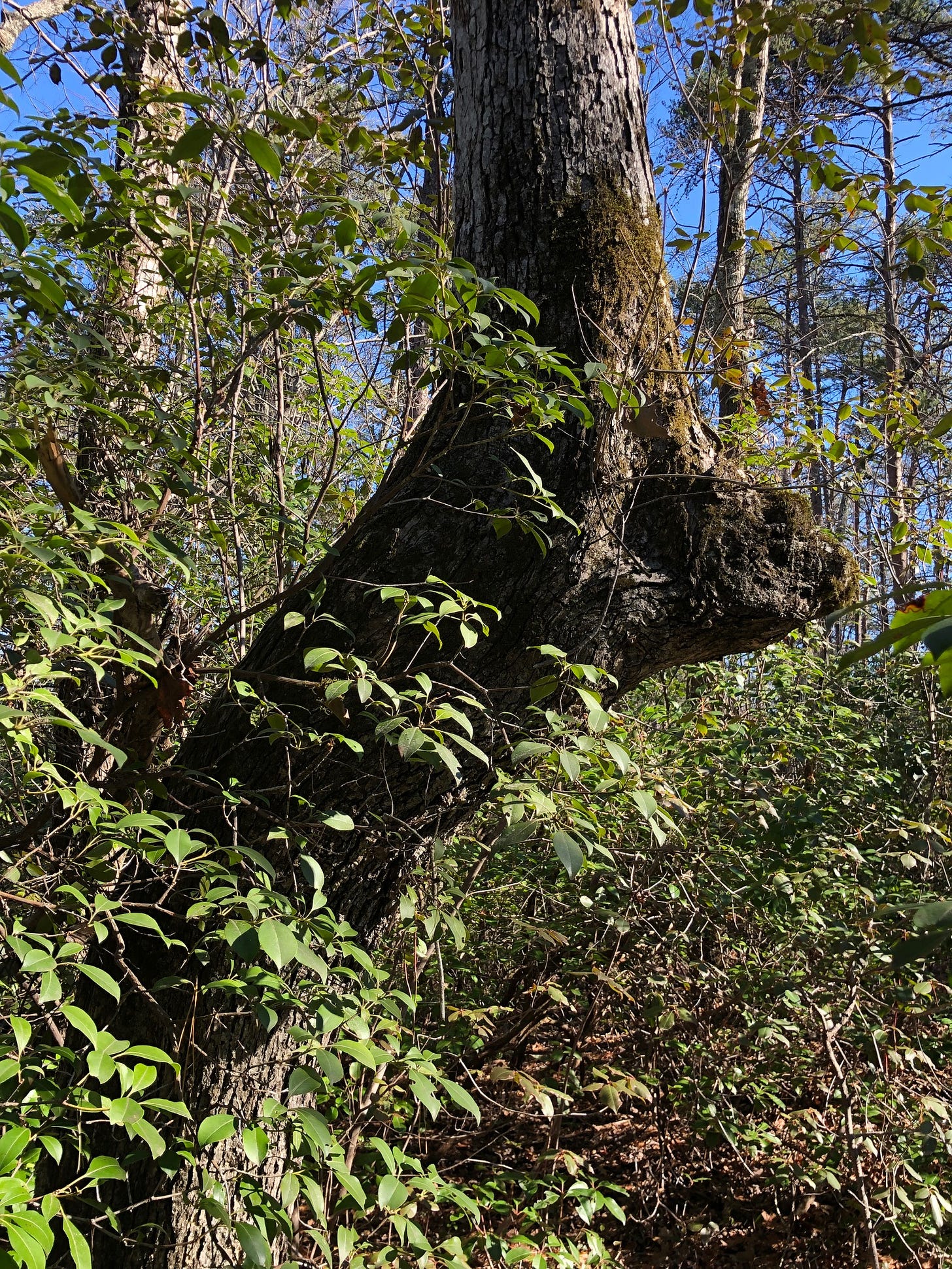
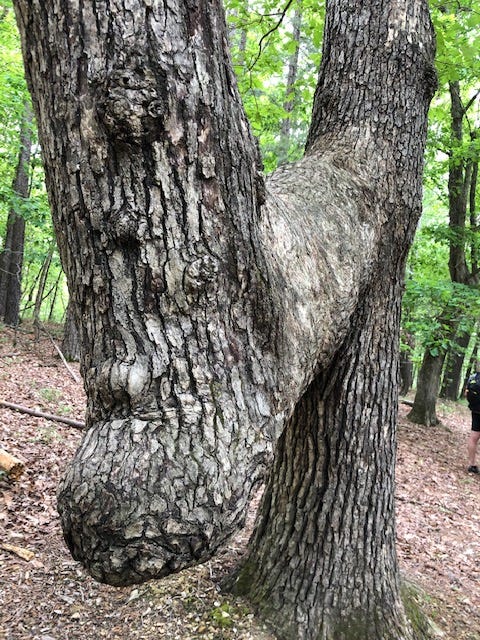
I live in western Massachusetts and spend a lot time in the woods. There is a tree I’ve passed several times on the Taconic Crest Trail. It’s always caught my eye and I’ve wondered if it could be a pointer tree. I’ll have to go take some pictures of it, it’s really stunning and moss covered. See if I can figure out what it might be pointing to in the area !
I'm going to look out for these on our property!